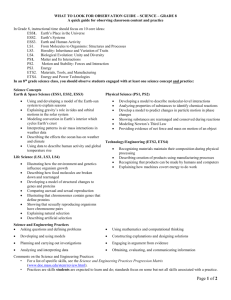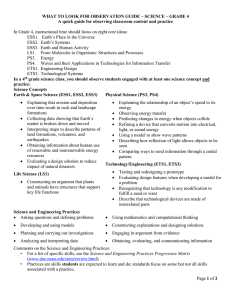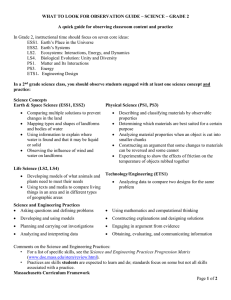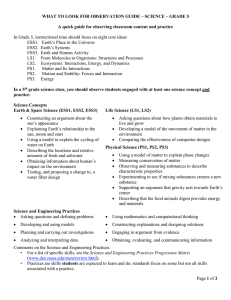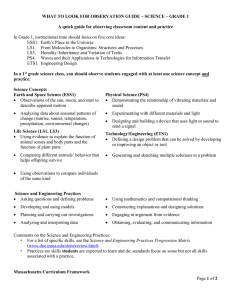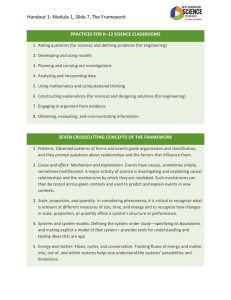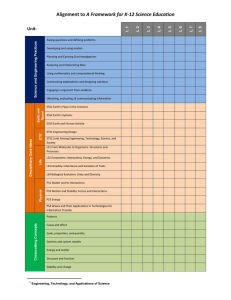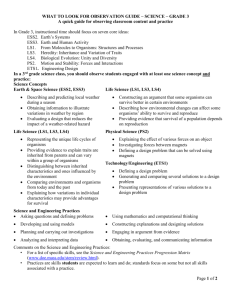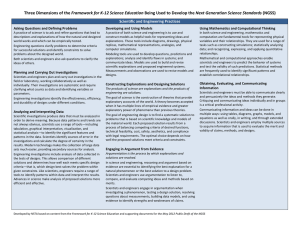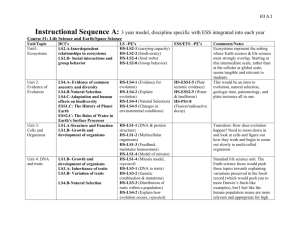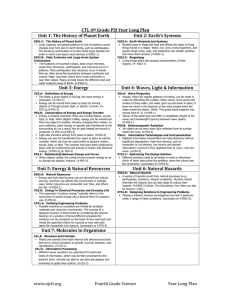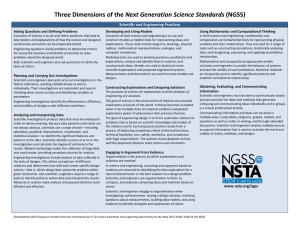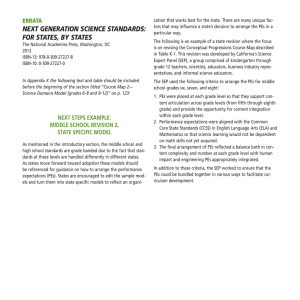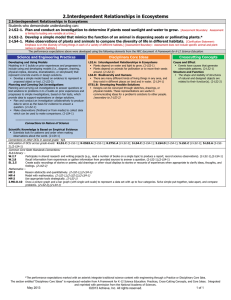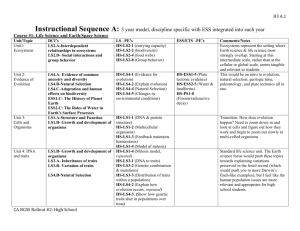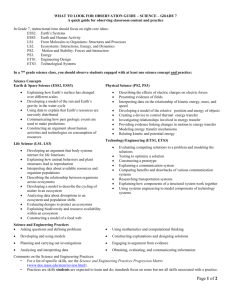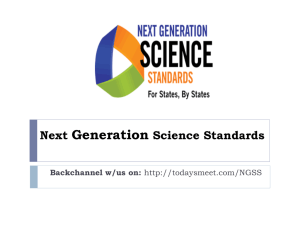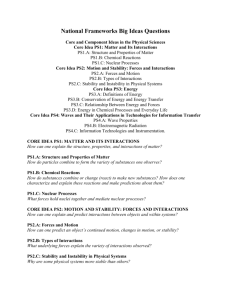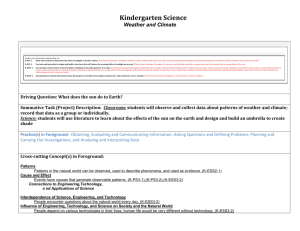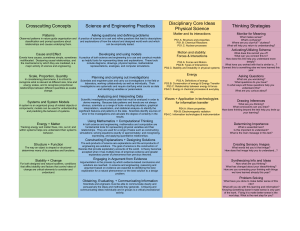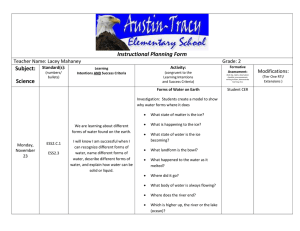What To Look For Science Grade 6
advertisement
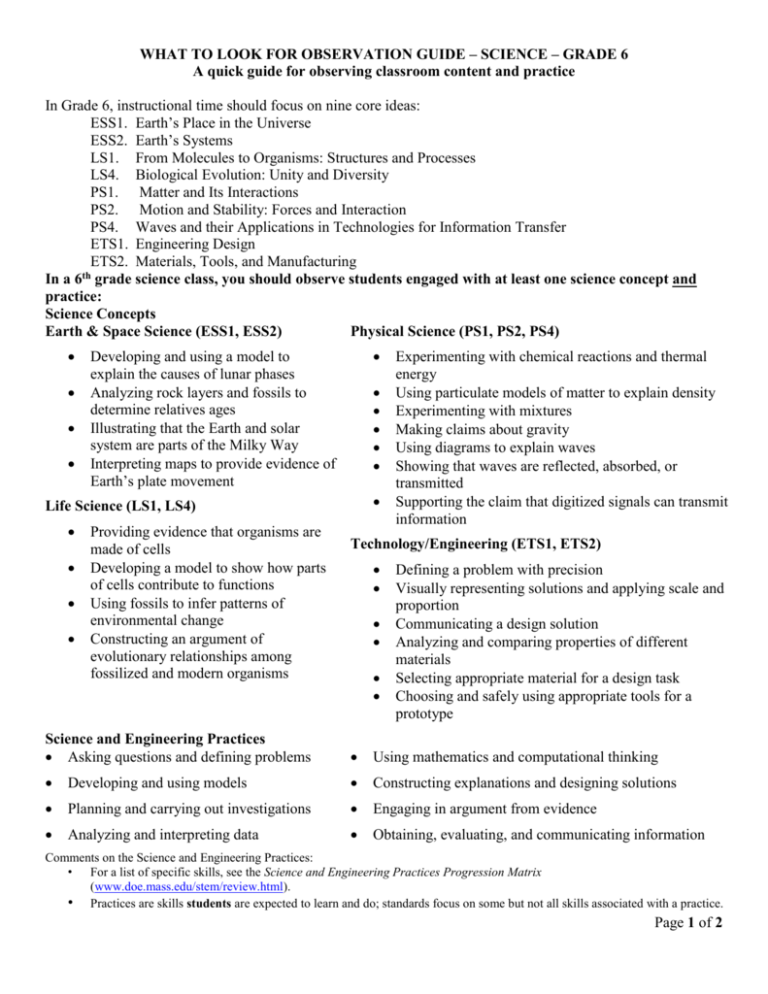
WHAT TO LOOK FOR OBSERVATION GUIDE – SCIENCE – GRADE 6 A quick guide for observing classroom content and practice In Grade 6, instructional time should focus on nine core ideas: ESS1. Earth’s Place in the Universe ESS2. Earth’s Systems LS1. From Molecules to Organisms: Structures and Processes LS4. Biological Evolution: Unity and Diversity PS1. Matter and Its Interactions PS2. Motion and Stability: Forces and Interaction PS4. Waves and their Applications in Technologies for Information Transfer ETS1. Engineering Design ETS2. Materials, Tools, and Manufacturing In a 6th grade science class, you should observe students engaged with at least one science concept and practice: Science Concepts Earth & Space Science (ESS1, ESS2) Physical Science (PS1, PS2, PS4) Developing and using a model to explain the causes of lunar phases Analyzing rock layers and fossils to determine relatives ages Illustrating that the Earth and solar system are parts of the Milky Way Interpreting maps to provide evidence of Earth’s plate movement Life Science (LS1, LS4) Providing evidence that organisms are made of cells Developing a model to show how parts of cells contribute to functions Using fossils to infer patterns of environmental change Constructing an argument of evolutionary relationships among fossilized and modern organisms Experimenting with chemical reactions and thermal energy Using particulate models of matter to explain density Experimenting with mixtures Making claims about gravity Using diagrams to explain waves Showing that waves are reflected, absorbed, or transmitted Supporting the claim that digitized signals can transmit information Technology/Engineering (ETS1, ETS2) Defining a problem with precision Visually representing solutions and applying scale and proportion Communicating a design solution Analyzing and comparing properties of different materials Selecting appropriate material for a design task Choosing and safely using appropriate tools for a prototype Science and Engineering Practices Asking questions and defining problems Using mathematics and computational thinking Developing and using models Constructing explanations and designing solutions Planning and carrying out investigations Engaging in argument from evidence Analyzing and interpreting data Obtaining, evaluating, and communicating information Comments on the Science and Engineering Practices: • For a list of specific skills, see the Science and Engineering Practices Progression Matrix (www.doe.mass.edu/stem/review.html). • Practices are skills students are expected to learn and do; standards focus on some but not all skills associated with a practice. Page 1 of 2 WHAT TO LOOK FOR OBSERVATION GUIDE – SCIENCE – GRADE 6 Science and Technology/Engineering What to Look For Guide The practices below, which are aligned to the MA Model Teacher Rubric, should be evident in planning and instruction. Any particular lesson will demonstrate some of the practices, not all. For each lesson, artifacts or observables might include: lesson plan, tasks and assessments, teacher instruction, student discussion and behavior, or student work. Standard I: Curriculum, Planning, and Assessment (I-A, I-B) Standard II: Teaching all Students (II-A) The lesson focuses on grade-level standard(s). The teacher actively engages students in authentic scenarios that provide opportunities to make sense of phenomena or design solutions. The lesson integrates science and engineering practice(s) with core idea(s) to support development of skills and conceptual understanding. The lesson engages students in making sense of relevant phenomena or solving relevant problems (through firsthand experiences or representations). The teacher promotes the use of evidence and provides time for students to communicate, clarify, justify, and represent their thinking about the content of the lesson. The teacher uses variation in students’ ideas and strategies to strengthen other students’ understanding. The teacher addresses student variability, and meets diverse needs (including English Language Learners and students with disabilities) to ensure equitable access to the lesson and achievement of the standard(s). The teacher references student work and discussion to summarize the practices and core ideas learned. The lesson intentionally relates new learning to students’ prior skills and knowledge. The lesson provides grade-appropriate connection(s) to Literacy and/or Mathematics standards. The lesson includes opportunities to monitor learning throughout the lesson (such as through questioning or student performance assessments). NOTES: See the full set of Standards and Indicators in ESE’s Model Teacher Rubric (http://www.doe.mass.edu/edeval/model/PartIII_AppxC.pdf). Massachusetts Curriculum Framework Page 2 of 2
